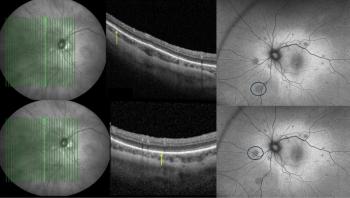
Fighting AMD: the power of nutrition
With a greater understanding of how ocular nutrition affects sight, ophthalmologists need to encourage healthy diets with nutrients and antioxidants essential for healthy vision.
The National Eye Institute's (NEI) first Age-Related Eye Disease Study (AREDS) in 2008 demonstrated that oral supplementation with antioxidant vitamins C and E, beta-carotene and zinc reduced risk of progression to advanced AMD by 25% in high-risk patients.2,3
The 2013 AREDS2 follow-up study found that long-term use (10 years) of the high-dose antioxidant-plus-zinc formula reduced the risk of developing advanced AMD by 34%.
The NEI chose a brand lutein product (Flora-GLO Lutein, Kemin Health/DSM) for the study because it is the only purified lutein that is the same as the lutein molecule found in nature.
Participants who took the AREDS formulation with lutein and zeaxanthin had an 18% reduced risk of developing advanced AMD over the 5-year study. Participants who had low levels and intake of lutein and zeaxanthin before the study began were 25% less likely to develop advanced AMD compared with participants with similar dietary intake who were not taking lutein and zeaxanthin supplements.4
The power of patient education
For best eye health, older adults and those at risk of vision loss due to AMD should take vitamins containing 10 mg of lutein and 2 mg of zeaxanthin. Yet, few people are getting the lutein and zeaxanthin they need. According to the National Health and Nutrition Examination Survey in the US, a mere 41% of Americans are familiar with lutein, and only 6% have ever heard of zeaxanthin.5
Encouraging diets that contain essential nutrients and antioxidants for healthy vision - and recommending supplements for nutrients like vitamin E, lutein and zeaxanthin where diet alone does not meet daily recommendations - is crucial to the sustained health of eye care patients globally.
References
1. S. Resnikoff et al., Bull. World Health Organ., 2004;82(11):844–851.
2.
3.
4.
5. NHANES 2003–2008.
Newsletter
Get the essential updates shaping the future of pharma manufacturing and compliance—subscribe today to Pharmaceutical Technology and never miss a breakthrough.













































